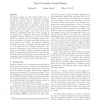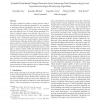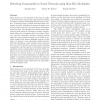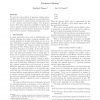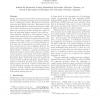SDM
2009
SIAM
14 years 8 months ago
2009
SIAM
Cluster ensembles provide a framework for combining multiple base clusterings of a dataset to generate a stable and robust consensus clustering. There are important variants of th...
SDM
2009
SIAM
14 years 8 months ago
2009
SIAM
Correlation mining has been widely studied due to its ability for discovering the underlying occurrence dependency between objects. However, correlation mining in graph databases ...
SDM
2009
SIAM
14 years 8 months ago
2009
SIAM
Many real-world applications call for learning predictive relationships from multi-modal data. In particular, in multi-media and web applications, given a dataset of images and th...
SDM
2009
SIAM
14 years 8 months ago
2009
SIAM
Given the pairwise affinity relations associated with a set of data items, the goal of a clustering algorithm is to automatically partition the data into a small number of homogen...
SDM
2009
SIAM
14 years 8 months ago
2009
SIAM
This paper considers the problem of change detection using local distributed eigen monitoring algorithms for next generation of astronomy petascale data pipelines such as the Larg...
SDM
2009
SIAM
14 years 8 months ago
2009
SIAM
Many datasets can be described in the form of graphs or networks where nodes in the graph represent entities and edges represent relationships between pairs of entities. A common ...
SDM
2009
SIAM
14 years 8 months ago
2009
SIAM
We introduce the problem of grammar mining, where patterns are context-free grammars, as a generalization of a large number of common pattern mining tasks, such as tree, sequence ...
SDM
2009
SIAM
14 years 8 months ago
2009
SIAM
Mining sequential movement patterns describing group behaviour in potentially streaming spatio-temporal data sets is a challenging problem. Movements are typically noisy and often...
SDM
2009
SIAM
14 years 8 months ago
2009
SIAM
We show the underpinnings of a method for summarizing documents: it ingests a document and automatically highlights a small set of sentences that are expected to cover the differ...
SDM
2009
SIAM
14 years 8 months ago
2009
SIAM
Subspace clustering and frequent itemset mining via “stepby-step” algorithms that search the subspace/pattern lattice in a top-down or bottom-up fashion do not scale to large ...

